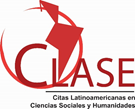The relationship between family functioning, self-identification and mental health of female high school students in Karaj
Resumen
This study was conducted aimed at examining the relationship between family functioning, identity and mental health of second and third grade female high school students. The sample consisted of 200 female students of Karaj city who were selected by cluster sampling from the statistical population. Subjects responded to GHQ, FAD and Ahmadi's existential crisis questionnaires. Data were analyzed using correlation coefficient and regression analysis and the hypotheses were tested. Based on the results, it was found that there was a significant positive relationship between family functioning and mental health, between self-identification and mental health, as well as between family functioning and mental health of female students (p = 0.01). In addition, the results of regression analysis indicated that family functioning and self-identification together explained about 50% of the variance in mental health of female students. The limitations of this study were the subject’s loss and the degree of confidence in their answers, because the study was conducted using the questionnaire and had the same limitations as all the studied with questionnaire. According to the results of this study and previous ones, some students had a low mental health and their mental health played a very significant role in their academic performance and daily life. So school authorities were recommended to adopt programs to improve the mental health of students by improving family functioning. Moreover, families were recommended to take steps to improve family functioning given the impact of the family on individuals' mental health and to increase family efficiency by participating in family enrichment programs.
Keywords:
Family functioning, self-identification, mental health, adolescents.
RESUMEN
Este estudio se realizó con el objetivo de examinar la relación entre el funcionamiento familiar, la identidad y la salud mental de las estudiantes de secundaria de segundo y tercer grado. La muestra consistió en 200 estudiantes de la ciudad de Karaj que fueron seleccionadas por muestreo de conglomerados de la población estadística. Los sujetos respondieron a los cuestionarios de crisis existencial de GHQ, FAD y Ahmadi. Los datos se analizaron utilizando el coeficiente de correlación y el análisis de regresión y se probaron las hipótesis. Con base en los resultados, se encontró que había una relación positiva significativa entre el funcionamiento familiar y la salud mental, entre la autoidentificación y la salud mental, así como entre el funcionamiento familiar y la salud mental de las estudiantes (p = 0.01). Además, los resultados del análisis de regresión indicaron que el funcionamiento familiar y la autoidentificación juntos explicaron alrededor del 50% de la variación en la salud mental de las estudiantes. Las limitaciones de este estudio fueron la pérdida de los sujetos y el grado de confianza en sus respuestas, porque el estudio se realizó utilizando el cuestionario y tenía las mismas limitaciones que todos los estudiados con el cuestionario. Según los resultados de este estudio y los anteriores, algunos estudiantes tenían una salud mental baja y su salud mental desempeñaba un papel muy importante en su rendimiento académico y en su vida diaria. Por lo tanto, se recomendó a las autoridades escolares adoptar programas para mejorar la salud mental de los estudiantes mejorando el funcionamiento familiar. Además, se recomendó a las familias que tomaran medidas para mejorar el funcionamiento familiar dado el impacto de la familia en la salud mental de las personas y para aumentar la eficiencia familiar al participar en programas de enriquecimiento familiar.Keywords:
Funcionamiento familiar, autoidentificación, salud mental, adolescentes.Descargas
Publicado
Cómo citar
Número
Sección
Licencia
La editorial "Universo Sur", de la Universidad de Cienfuegos, publica el contenido de la Revista "Universidad y Sociedad" bajo una Licencia Creative Commons Atribución-NoComercial-SinDerivar 4.0 Internacional.
© Podrá reproducirse, de forma parcial o total, el contenido de esta publicación, siempre que se haga de forma literal y se mencione la fuente.










